Tokyo is a city where ancient traditions and cutting-edge innovation coexist in vibrant harmony. From serene shrines nestled among neon-lit skyscrapers to centuries-old tea ceremonies alongside futuristic art installations, the city continuously balances its rich heritage with a relentless drive for modernity. Tokyo’s dynamic energy is felt in its bustling streets, world-class museums, and an unparalleled culinary scene that ranges from humble ramen stalls to Michelin-starred restaurants — offering a taste experience as diverse and exciting as the city itself.
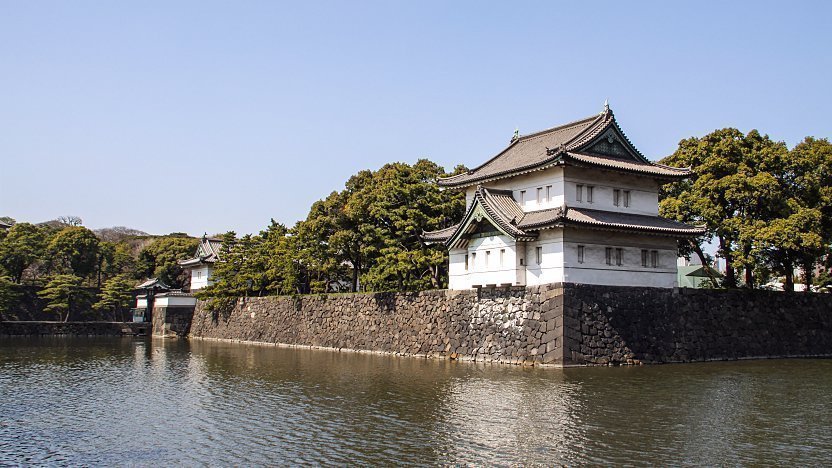
Set on the historic grounds of Edo-jō — once the largest fortress in the world — Tokyo’s Imperial Palace blends centuries of political power with refined Japanese design. Though most of the 3.4 sq km complex is off-limits as the residence of Japan’s imperial family, visitors can still glimpse a portion of the inner compound on guided tours, or enjoy a peaceful walk through the surrounding Kōkyo-gaien gardens.
The highlight for many is the serene Imperial Palace East Garden, which sits on the former site of the castle’s innermost defenses and is open to the public year-round without a guide. Stone walls, moats, and Edo-period watchtowers hint at the site’s military past, while modernist palace buildings — rebuilt after WWII — represent Japan’s transition into the modern age.
Free guided tours (reservation required) offer insight into imperial architecture and court traditions, passing key buildings like the Kyūden (the main palace) and scenic bridges such as Nijū-bashi. Whether strolling the leafy paths or pausing before the moats, a visit to the Imperial Palace offers a glimpse into the quiet dignity of Japan’s imperial heritage — right in the heart of Tokyo.
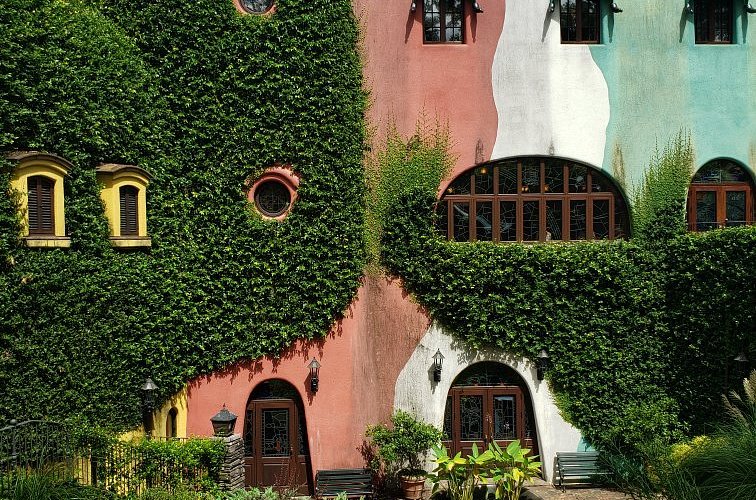
The Ghibli Museum is a magical gateway into the whimsical world of Studio Ghibli — the legendary animation studio behind Spirited Away, My Neighbour Totoro, Princess Mononoke, and more. Designed by Studio Ghibli’s co-founder and master storyteller Miyazaki Hayao, the museum blends imagination, nostalgia, and artistic mastery in a space that feels as alive and curious as the films themselves.
From spiral staircases that lead to unexpected corners, to a life-size Cat Bus replica just for kids, every detail invites exploration. Inside, fans can admire original sketches, watch exclusive short films at the Saturn Theater, and wander exhibits that trace the evolution of animation — both Ghibli’s and the medium’s at large.
This isn’t a theme park — it’s a deeply personal, handcrafted museum that celebrates creativity, storytelling, and the childlike wonder that defines Studio Ghibli’s work. A charming café, cozy reading room, and beloved gift shop round out the experience.
Planning your visit:
Tickets: Must be purchased in advance. For overseas visitors, buy through approved travel agents up to 4 months ahead. If in Japan, use Lawson’s online portal up to 1 month in advance. Tickets are non-transferable and ID may be required.
Adults (19+): ¥1000
Ages 13–18: ¥700
Ages 7–12: ¥400
Ages 4–6: ¥100
Under 3: Free
Getting there: The Ghibli Museum (officially “Ghibli Museum, Mitaka”) is near Inokashira Park. Walk about 30 minutes through the park from Kichijōji Station, or take a minibus from Mitaka Station (bus stop 9) every 20 minutes (¥210 one way / ¥320 round trip).
For fans of animation and imagination, the Ghibli Museum is not just a visit — it’s a dream brought to life.
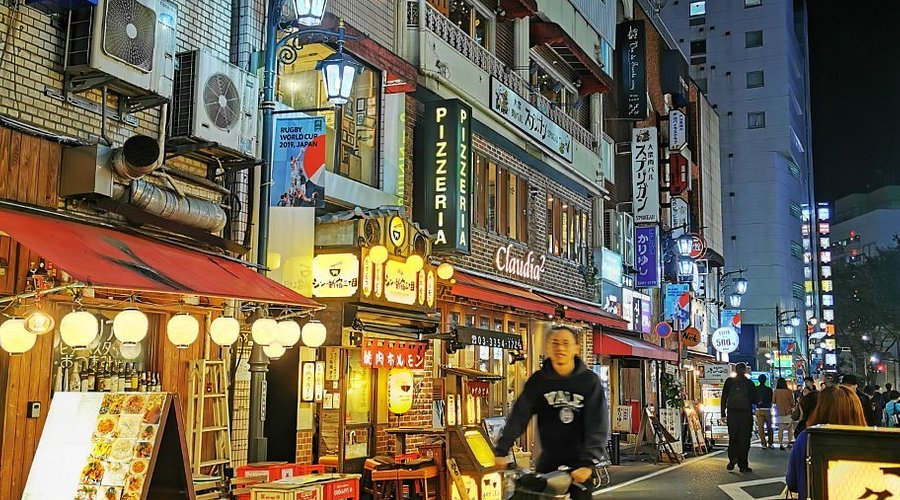
Golden Gai, nestled in Shinjuku’s buzzing heart, is a rare pocket of Tokyo that feels like time stood still. A maze of narrow alleys and rickety, low-slung buildings, it’s home to around 200 tiny bars — some no wider than a hallway — each steeped in its own atmosphere and lore. More than a drinking district, Golden Gai is a living, breathing tribute to Tokyo’s postwar bohemia.
For decades, it’s been a hideout for writers, filmmakers, musicians, and misfits. Many bars once operated as creative salons, where regulars shaped the vibe as much as the owners did. While some still hold on to this insular charm — and may politely turn away newcomers — a new wave of younger owners is opening doors to international visitors, injecting new energy without diluting the spirit.
How to explore Golden Gai:
Wander the alleys slowly, peek at the bars’ signage (look for English welcome signs), and trust your instincts.
If a bar looks inviting and has space, step in — just be aware of cover charges, usually between ¥500 and ¥1500, posted near the door.
Be respectful: this is private property. No photos without permission, and keep voices low — the charm here is intimacy, not noise.
Where to stay nearby:
Shinjuku is a lively, well-connected hub with hotel options for every budget. A few picks within walking distance of Golden Gai:
Hotel Gracery Shinjuku (7 min): Known for its Godzilla statue and city views.
Shinjuku Granbell Hotel (5 min): Stylish with a rooftop bar, ideal for solo travellers or couples.
Imano Tokyo Hostel (7 min): Friendly, affordable, and great for meeting fellow travellers.
If you’re new to Tokyo but want to taste its old soul, Golden Gai is an unforgettable sip of it.
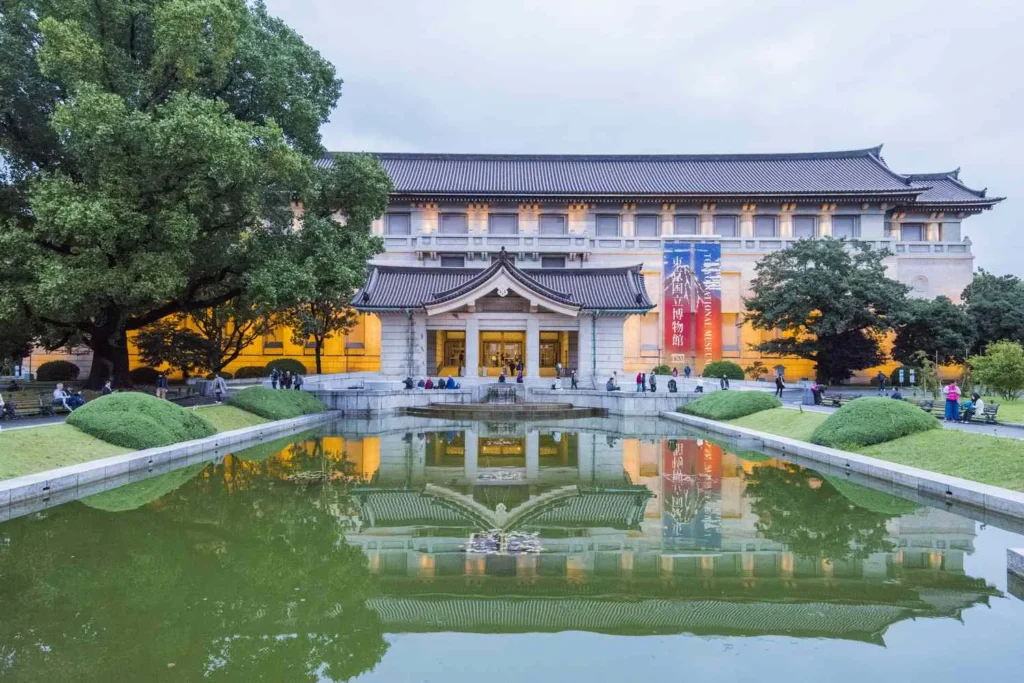
If you visit only one museum in Tokyo, make it the Tokyo National Museum — a place where Japan’s cultural soul is on full display. Located in Ueno Park, this grand institution houses the world’s largest collection of Japanese art, making it a must for anyone wanting to understand the country’s rich artistic heritage.
From ancient Buddhist sculptures, samurai swords, and ceremonial armour to delicate ukiyo-e woodblock prints, elegant kimonos, and prehistoric pottery, the museum traces Japan’s evolution through its most beautiful and telling objects.
If you’re short on time, focus on the Honkan (Japanese Gallery). Its 2nd floor presents a carefully curated journey through Japan’s art history — the highlight reel of over a millennium of creative expression.
Got more than a couple of hours? Explore further:
Gallery of Hōryū-ji Treasures: Rare Buddhist artefacts, masks, and scrolls gifted from the temple founded in 607.
Tōyōkan (Asian Gallery): Beautiful pieces from across Asia, including Chinese ceramics and Indian sculpture.
Heiseikan: Archaeological finds that span Japan’s prehistoric Jōmon and Yayoi periods, showcasing everyday life from millennia ago.
In spring (mid-March to mid-April) and autumn (late October to early December), try to catch the rare opening of the museum garden, home to historic teahouses in a serene setting.
The museum is thoughtfully laid out with:
A restaurant, café, and coffee shop for relaxing breaks.
A well-stocked souvenir shop for art books, prints, and traditional crafts.
Founded in 1872, the Tokyo National Museum is Japan’s oldest museum, now part of the National Institutes for Cultural Heritage. Its home in Ueno Park since 1882 reflects Tokyo’s emergence as the cultural capital of modern Japan.
Together with its counterparts in Kyoto, Nara, and Kyushu, it forms a cornerstone of Japan’s efforts to preserve and present its cultural identity to the world.
Admission: ¥1000 for adults
Free entry: Visitors under 18 and over 70
Temporary exhibitions often charge extra and may have limited English signage
For art lovers, historians, or simply curious travellers, the Tokyo National Museum offers not just insight — but a genuine emotional connection to the story of Japan.
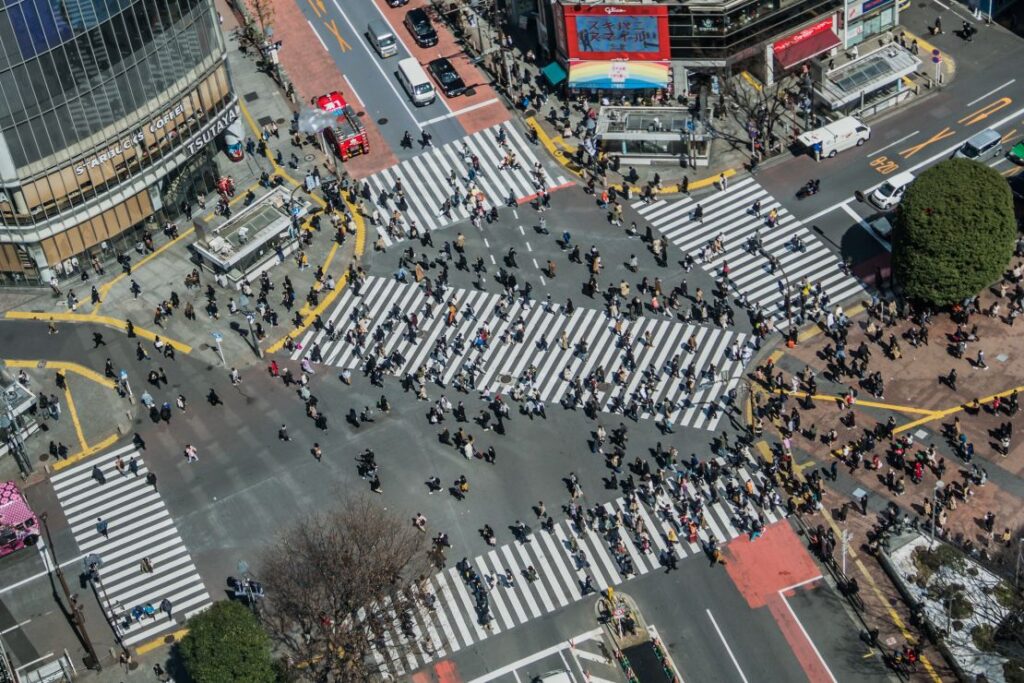
Shibuya Crossing is more than just a traffic junction — it’s a full-blown Tokyo experience. Often referred to as the busiest pedestrian crossing in the world, it embodies the organised chaos, energy, and rhythm that define life in Japan’s capital. When the traffic lights turn red in all directions, the entire intersection fills with people moving at once, yet with remarkable ease and precision — a fascinating spectacle to watch, and even more surreal to be part of.
When to visit
For the full effect, head there after dark on a Friday or Saturday night, when the neon signs are blazing and foot traffic is at its peak. The sheer volume of people emerging from Shibuya Station and fanning across the intersection is almost hypnotic — yet despite the chaos, everyone moves with an unspoken flow.
Where to watch
If you want a bird’s eye view, Mag’s Park (on the rooftop of the Shibuya 109-2 department store) is one of the best vantage points. It’s safe, screened with plexiglass, and free to access — great for taking photos or simply absorbing the scene. Other popular lookout spots include the Starbucks above the Tsutaya building, though space at the window fills up fast.
What’s nearby
Beyond the crossing, Shibuya is packed with fashion boutiques, arcades, ramen shops, and nightlife. The Hachikō statue, honouring Japan’s famously loyal dog, is just outside the station and a common meeting point.
Where to stay nearby
Staying in Shibuya gives you immediate access to this iconic hub and excellent rail connections to other parts of Tokyo. A few good accommodation options include:
The Millennials Shibuya (6 min walk): Stylish, high-tech capsule hotel with smart sleeping pods and a social atmosphere.
Mustard Hotel Shibuya (15 min walk): Minimalist, design-forward boutique hotel with a youthful vibe.
JR-East Hotel Mets Shibuya (12 min walk): Comfortable and convenient with direct access to the station, ideal for travellers who want modern comfort and easy transit.
Even if you’re only in Tokyo for a short time, crossing Shibuya at least once is a rite of passage. It’s not just a photo opportunity — it’s one of those rare urban moments that sticks with you.
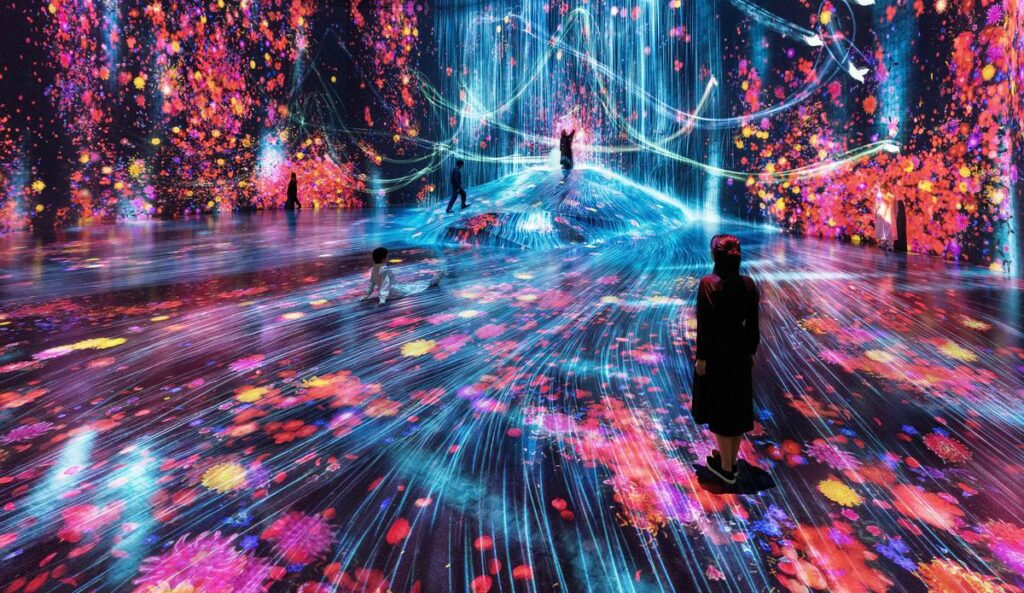
Recently reopened at its new home in Azabudai Hills, teamLab Borderless offers a captivating, immersive art experience that continues to push the boundaries of digital creativity. Known for crafting interactive, light-based environments where art flows freely across walls and spaces, the collective teamLab has once again reimagined how visitors engage with art — not as passive viewers, but as active participants.
Originally opened in Odaiba in 2018 and closed in 2022, the museum’s move to Azabudai Hills has introduced several new installations, with plans for over 50 evolving artworks. The spaces are dynamic: as you walk through them, the art responds — shifting in colour, sound, and form depending on your movement and presence.
What to expect
There are no set routes or maps. The idea is to wander freely and let the artworks guide your experience. Vivid forests of light, infinite mirrored rooms, floating lanterns, and ethereal projections blur the line between digital and physical space. Expect to lose track of time — and maybe even space.
Tickets and entry
Advance booking is required, with tickets tied to a specific date and entry time.
Pricing follows a dynamic model, meaning costs may vary depending on demand or season.
Visit the official teamLab Borderless website to check availability and purchase tickets ahead of your visit.
Tips for your visit
Wear comfortable shoes — you’ll be on your feet for a while.
Some areas are dark or reflective, so mind your step and your belongings.
While photography is allowed, flash is not — and it’s best to stay present and experience the art without the lens for at least part of your visit.
This new chapter of teamLab Borderless continues to explore what it means for art to be untethered — not confined by frames, walls, or expectations. It’s a one-of-a-kind experience that blends science, nature, and technology into pure wonder.
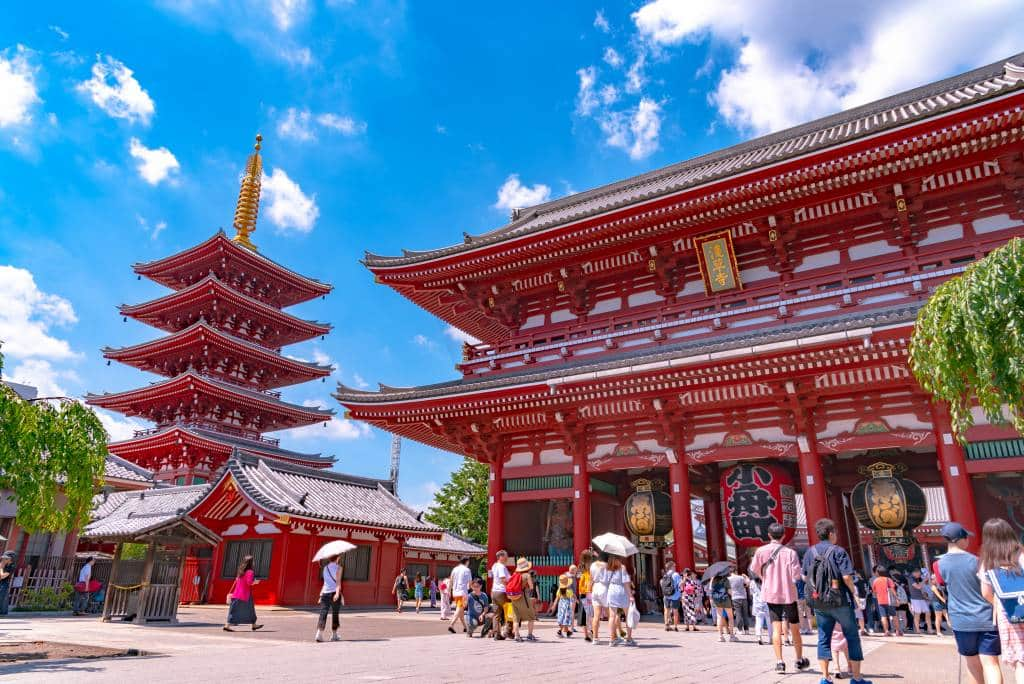
Tokyo’s most visited and beloved temple, Sensō-ji in Asakusa, enshrines a mysterious golden image of Kannon, the Buddhist goddess of mercy. According to legend, the statue was miraculously pulled from the Sumida River by two fishermen in AD 628, and though the image has never been publicly displayed, it has remained on the site ever since. The current temple building, a postwar reconstruction, dates to 1958.
Despite its popularity and frequent crowds — especially on weekends — Sensō-ji has a deeply spiritual ambiance. For a quieter and more atmospheric experience, consider visiting in the evening, when the temple buildings are beautifully illuminated and the crowds thin out.
The main approach to the temple is through the Kaminari-mon (Thunder Gate), one of Tokyo’s most iconic sights. Flanking the gate are fierce statues of Fūjin, the god of wind, and Raijin, the god of thunder. Beneath the giant red lantern that dominates the gate, look up to see a delicately carved dragon—a detail often missed in the bustle.
Just beyond lies Nakamise-dōri, a vibrant shopping street packed with vendors selling everything from simple souvenirs to traditional sweets and Edo-period crafts. The street has served as a commercial approach to the temple for centuries.
At the end of Nakamise-dōri rises the main hall of Sensō-ji. To the left is the impressive Five-Storey Pagoda, a reconstruction of an earlier structure commissioned by shogun Tokugawa Iemitsu, most recently renovated in 2017.
In front of the temple is a large incense cauldron where visitors waft fragrant smoke over their heads and bodies in the belief that it will bring healing and good fortune.
Although the fabled Kannon image remains hidden, a steady stream of worshippers come to offer prayers. Its unseen presence is central to the temple’s sacred identity.
On the eastern edge of the Sensō-ji complex stands Asakusa-jinja, built in 1649 to honour the two fishermen brothers and the village chief who discovered and enshrined the Kannon statue. Painted a rich vermilion, the shrine is a rare example of early Edo architecture and a quiet counterpoint to the grand Buddhist structures nearby.
It’s also the focal point of Sanja Matsuri, one of Tokyo’s largest and most energetic festivals, held every May, drawing thousands in celebration of the area’s spiritual heritage.
Sensō-ji is more than just a tourist attraction — it is a living, breathing centre of worship, cultural tradition, and Tokyo’s enduring history.

Tokyo’s most revered Shintō shrine, Meiji-jingū, is a serene tribute to Emperor Meiji and Empress Shōken, whose reign marked Japan’s dramatic transition from feudal isolation to modern nationhood. First completed in 1920, the shrine was destroyed during World War II air raids and painstakingly rebuilt in 1958. Unlike many postwar reconstructions, Meiji-jingū retains a sense of quiet grandeur, deeply infused with spiritual atmosphere.
Though currently undergoing gradual renovations in preparation for its centennial, the shrine remains fully open to visitors.
Approaching the shrine, you’ll walk a gravel path through a tranquil forest of over 120,000 trees, each one donated from across Japan. At the path’s entrance stands a monumental torii gate, the first of several along the route, marking the boundary between the secular and the sacred.
About halfway along the path, you’ll find a temizuya, a traditional cleansing station. Here, visitors perform a simple purification ritual by ladling water over their hands — a quiet, meditative moment before reaching the shrine.
Constructed from unpainted cypress and topped with a copper-plated roof, the main hall of Meiji-jingū exudes stately simplicity. Visitors are welcome to offer a prayer in the traditional Shintō manner:
Toss a ¥5 coin into the offering box
Bow twice
Clap your hands twice
Make your prayer
Bow once more
Near the main shrine buildings, you can purchase ema (wooden plaques where you can write your wishes or prayers) or omamori (charms for protection, success, or good health).
Although much of the shrine’s grounds are densely wooded and off-limits, the Meiji-jingū Gyoen strolling garden is open to the public. Originally designed by Emperor Meiji as a gift for the empress, the garden is best known for its iris garden, which bursts into bloom in June. Shaded paths, a traditional teahouse, and a quiet pond add to the garden’s reflective beauty.
Located just steps from the bustling districts of Harajuku and Shibuya, Meiji-jingū offers a striking contrast: a deeply peaceful place that invites reflection. Whether you come for the architecture, the spiritual rituals, or simply the atmosphere of its forested setting, the shrine offers a glimpse into Japan’s cultural soul — past and present.
WhatsApp us